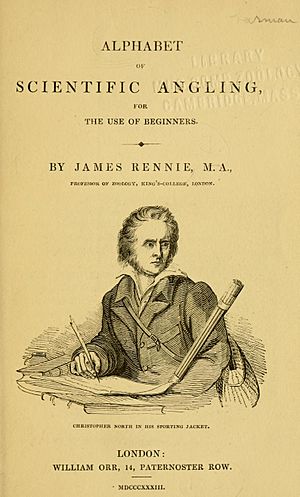James Rennie (naturalist) facts for kids
James Rennie (born February 26, 1787, in Sorn, East Ayrshire, Scotland – died 1867, in Adelaide, Australia) was a Scottish naturalist. A naturalist is someone who studies nature, including plants and animals.
Contents
A Look at James Rennie's Life
James Rennie studied science at Glasgow University in Scotland. He earned his Master of Arts degree in 1815. After his studies, he became a clergyman.
Moving to London and Teaching
In 1821, James Rennie moved to London, England. He became a professor at King's College. From 1830 to 1834, he taught natural history and zoology. Natural history is the study of living things and nature. Zoology is the study of animals.
Becoming an Author
After his time as a professor, Rennie decided to focus on writing. He became a full-time author, writing many books about nature.
Life in Australia
In 1840, James Rennie moved to Australia. He settled in Sydney and ran a school there. This school, called the College High School, focused on teaching arts and natural history.
James Rennie's Books and Lectures
James Rennie wrote many interesting books about the natural world. He wanted to share his knowledge with others.
Key Books by Rennie
Some of his well-known books include:
- The Natural History of Insects (1829): He wrote this book with John Obadiah Westwood. It was published by John Murray.
- Insect Architecture (1830): This book was very popular. It explored how insects build their homes.
- Alphabet of Botany For Use of Beginners (1834): This book helped new students learn about plants.
Editing and Lecturing
Besides writing his own books, Rennie also edited others' works. For example, he edited Gilbert White's famous book, The Natural History and Antiquities of Selborne, in 1833. He also gave public talks. In 1831, he gave a special lecture at the Royal Institution Christmas Lecture.


